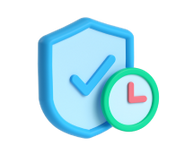When following a pattern, you will find in the beginning it will give you a hook/needle size and a measurement. It will indicate how many stitches per how many inches. This is called gauge. This is a very important piece of information. Example: if a pattern has squares that are 4 inches across and you have to make 5 squares across, your piece should measure 20 inches without a border. If you do not measure your gauge and your squares are 3 inches instead of 4 inches, your piece will measure 15 inches without border. If the squares measure bigger your piece will be bigger. This information is critical when making wearable items. It also helps determine how much yarn you need. If you are working and your stitches are larger than what the gauge calls for, you will not have enough yarn to finish your project if you purchased a kit, or bought your yarn based off of a pattern.
You will find the term "to gauge" in many patterns. What this means is that you have to change your hook size up or down to meet the size required for the pattern. Sometimes you also may have to use multiple hooks. When you measure, if you are getting more stitches than what the gauge states, you will need to use a larger needle or hook, and if you are getting less stitches, you will need to use a smaller needle or hook. This is SUCH an important step. If you look at the picture below you will see 4 swatches... all 4 using the same yarn and have the same number of stitches. Quite a difference, right? If you want your project to turn out the size it is meant to, you have to check your gauge and adjust your hook or needle size when necessary to get the correct gauge.

You may also see a term "gauge when blocked". This can be applied when the item you are working on needs to be manipulated and the stitches need to be straightened or aligned. Blocking can make all the difference for a finished product. Read about blocking and its importance here . It helps give a refined look to any item.


